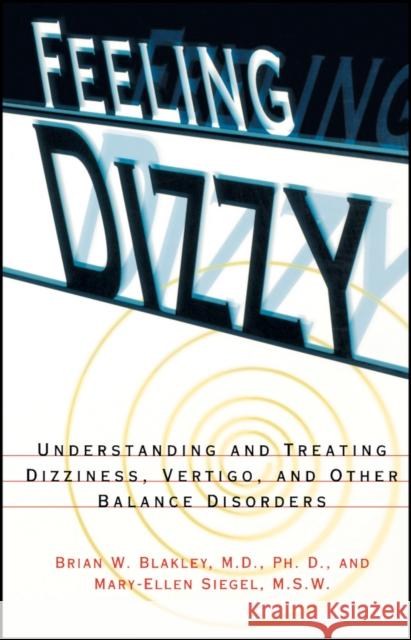Książki: » Zdrowie » Feeling Dizzy: Understanding and Treating Vertigo, Dizziness, and Other Balance Disorders
topmenu

• Nauka
[2690469]
[1636033]
[61950]
[141570]
• Komiksy
[31804]
[21622]
[510205]
• Hobby
[106610]
[1967]
[199190]
[473]
• Słowniki
[2705]
• Inne
[406553]
[1401]
[165137]
[408151]
• Religia
[455261]
[422]
• Sport
[59164]
• Sztuka
[223670]
[3791]
[205993]
• Zdrowie
[87965]
[118]
• Zabawki
[2617]
[3204]
[262]
[9860]
Feeling Dizzy: Understanding and Treating Vertigo, Dizziness, and Other Balance Disorders
ISBN-13: 9780028616803 / Angielski / Miękka / 1997 / 256 str.
- When you turn your head suddenly, do you feel sick to your stomach?
- Do you often become dizzy when you get up too quickly from a chair?
- Have you ever felt a sense of motion when you're standing still?
- Identifies and explains the three types of dizziness: vertigo, imbalance, and fainting.
- Describes treatment options, from medication or surgery to therapy and rehabilitation.
- Outlines self-help options, including relaxation techniques, biofeedback, and exercise.










